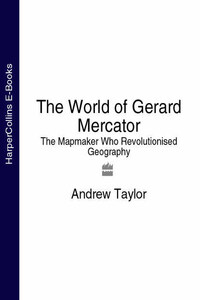ONE OF MY earliest memories is of myself as a small boy sitting on a wide window ledge, with my whole world laid out around me. As I turned my head, I took in the comfortable, familiar room behind me, the door into the kitchen, and the wooden sideboard up against the wall, while outside I could see down the yard toward the joiner’s shop, which I knew was filled with sawdust and sharp blades. I could also see the familiar stone steps up to my front door, and another house across the way, where an old man used to sit in the doorway for hours on end, dozing.
That was about as far as my world stretched. I was aware, of course, of other worlds beyond, worlds I had heard about, half understood, or imagined for myself. Scattered among them were a few familiar islands that I had visited and knew fairly well – the stone-flagged floor of the greengrocer’s on the corner, for instance, the high wall on top of which I could walk up to the church, or the little vegetable garden where I used to watch my father as he worked – but for all intents and purposes, they were surrounded by darkness. Good things occasionally came in from those shadows outside – bars of chocolate brought by a kindly aunt, perhaps, or my mother’s shopping – but they were on the whole mysterious and unwelcoming, and if I occasionally peopled them with monsters, that was no more than any child does.
The story of discovery and mapmaking is one of pushing back shadows. The great explorers brought back undreamed-of riches and stories of unknown lands and peoples that were barely believable – the discovery of America, for instance, has been described as the greatest surprise in history – but their claims and discoveries had to be evaluated, laid out on paper, before they could form a coherent picture of the world. Much of that work was carried out by unknown figures, whose maps are lost, forgotten, or remembered only by passing mentions in ancient documents. Some were sailors or traders themselves, trying to prepare reliable charts for their own use and for those who came after them, but many were scholars who never went to sea. A few became famous and produced individual maps that stand out as landmarks in the history of the understanding of the planet. But none, in the last two thousand years, achieved as much as Gerard Mercator in extending the boundaries of what could be comprehended.
Mercator saw himself as a scholar in the ancient tradition, an uomo universale in the mold of the Renaissance – a seeker of truth to whom the whole of knowledge was a single book to be opened. His achievement was nothing less than to revolutionize the study of geography and redraw the map of the world.
Born near Antwerp in 1512, he lived through almost the entire turbulent sixteenth century – an age in which the known world grew year by year as new voyages made new discoveries, but one which also saw the Catholic Church and Europe itself torn apart by Martin Luther and the Protestant reformers. The sacking of cities, the smashing of statues by reformist zealots, and the religious savagery of Church authorities were all part of the temper of the times. This was the age of the Inquisition, whose power, as Mercator was to discover firsthand, extended across the Low Countries: The judicial torture and burning of the unfaithful were commonplace. But it was also an age of intellectual upheaval. Almost halfway through the century, the Polish astronomer Nicolaus Copernicus published his revolutionary theory that the Earth revolved around the Sun – an idea that was confirmed some sixty-five years later by the observations of Galileo Galilei through his telescope. The Church, still clinging to the old idea of the Earth at the center of the universe, could make Galileo recant, but it could not erase the new thinking.
By the time Mercator was born, the printing press had made books readily available across Europe, but the language of religion and intellectual debate was the same as it had been in the days of the medieval copyists toiling over manuscripts in the monasteries. Not just the Bible but also scientific, medical, and philosophical texts were written in Latin. At the University of Leuven and later in Duisburg, Mercator’s conversation and correspondence were also in Latin. However, by 1594, the year he died, Bibles in the daily language of the people were commonplace. Galileo’s writings appeared in clear and lucid Italian. This signified more than a change of vocabulary or language; scientists, by the turn of the century, were gaining the confidence to rely on observation, measurement, and reasoning rather than looking into the past for inspiration.














